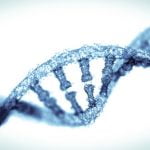
A brave new world of genetically-modified “designer” babies has come a step closer with the first in-depth study showing that it is technically possible to alter the genes of human IVF embryos safely. Scientists in the United States have for the first time convincingly demonstrated how inherited diseases caused by defective genes can be corrected in the earliest stage of life using a revolutionary gene-editing technology known as Crispr-Cas9 – likened to the “find and replace” command of word-processing software.
The same technology could in theory be used to enhance the genes of IVF embryos with perceived beneficial traits, such as better eyesight or stronger muscles. However, this aspect of the research is highly controversial and will be opposed by many religious and ethical organisations. Another scientific first
Another scientific first “I’ve heard Mitalipov has done it. He’s successfully done genetic modification of human embryos.” Senior scientist The study was carried out on spare human eggs and donated sperm collected for research purposes by a fertility clinic at the Oregon Health and Science University in Portland, Oregon. It was led by Shoukhrat Mitalipov, a world authority on embryo research with a list of scientific “firsts” to his name. Although Mitalipov and his colleagues are under a strict confidentiality agreement with a leading scientific journal, which has scheduled to publish the work next month [August], we understand from other sources that the study breaks new ground in demonstrating the feasibility of creating genetically modified babies. “I’ve heard Mitalipov has done it. He’s successfully done genetic modification of human embryos. The quality of the work was high,” said one senior scientist who wished to remain anonymous. Three previous attempts at using Crispr to create genetically modified human embryos were carried out in China but produced mixed results. The first two studies deliberately used genetically defective embryos which could not develop in the womb, but the gene editing proved highly ineffective. A different league (Click to enlarge) The last study, published in June, involved just six normal IVF embryos created for research purposes with sperm from men carrying inherited disease genes. Although Crispr seemed to work in correcting the disease mutation in one or two embryos, few scientists were convinced that the study showed Crispr would ever be safe enough to use in a clinical trial. However, Mitalipov’s work is understood to be in a different league altogether. It was far more extensive and detailed and involved scores of embryos which were followed up with in-depth tests on the cells of each two- or three-day old embryo to see if they were correctly edited by Crispr to eliminate the inherited disease completely. None of the embryos was allowed to live beyond a few days in the laboratory and there was never any intention of transferring any of them into a woman’s womb, which would be illegal in the US. In the US West Coast state of Oregon, however, it is not illegal to create human embryos for research purposes providing the work does not involve the use of federal government funding. “So far as I know this will be the first study [on editing human IVF embryos] reported in the US,” said Jun Wu, a researcher at the Gene Expression Laboratory of the Salk Institute for Biological Sciences in La Jolla, California, who is understood to be one of the many authors na
Source:-inews


